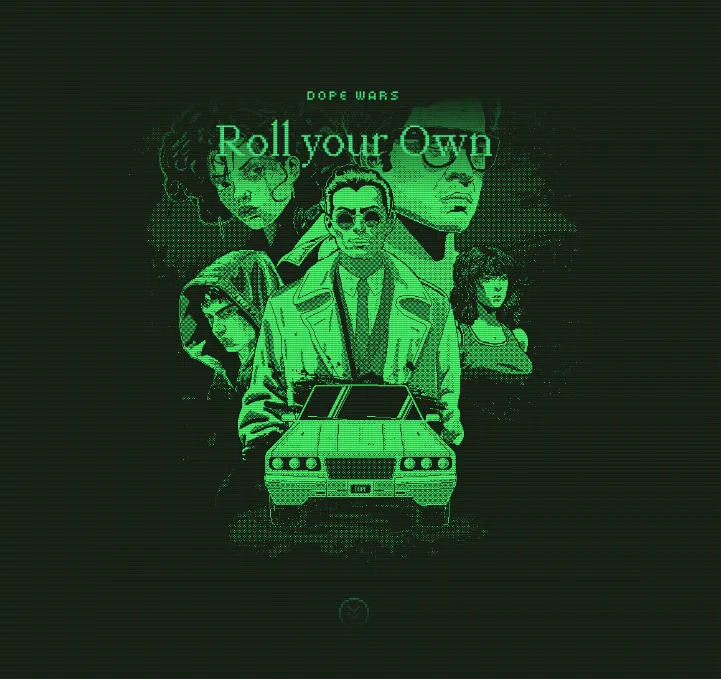The key to the maturity of full-chain games? An article taking stock of on-chain game engines worthy of attention
Original author: WILLIAM M. PEASTER
Original compilation: Deep Chao TechFlow
What is on-chain gaming and why is it important?
On-chain games refer to games whose core logic, rules, assets and status are stored directly on the blockchain. By far the most common blockchain is the Ethereum or Ethereum Virtual Machine (EVM) network.
Unlike traditional off-chain games or hybrid on-chain and off-chain games, every action, transaction and progress in on-chain games is recorded on the blockchain. This approach has a range of value propositions, namely:
Ownership – Players truly own their game assets, which can be traded, sold, or used across different games as NFTs.
Transparency – Game rules and mechanics are open and verifiable to anyone, ensuring fairness and allowing third-party builders to create unique experiences on top of the core game.
Interoperability - assets and progress can be used across multiple games or platforms.
Economics – Players can earn real-world value through cryptoeconomic gameplay, turning leisure time into potentially lucrative opportunities.
Decentralization – Games are not controlled by a single entity, making it easier for players to participate in the governance process of games they are interested in.
Different on-chain game engines
On-chain game engine projects come in different shapes and sizes. For example, some are open source and geared toward gaming ecosystems, while others are proprietary and custom-built to power a single game.
To help you get a better grasp of the basics of this scene, I’ve listed below some of the major on-chain game engine projects that you should keep an eye on, as they will shape the future of blockchain-based gaming experiences.
MUD
Lattice is a team building MUD, an open source framework for developing on-chain applications, suitable for games and more. Currently, the largest number of on-chain games are built on MUD.
Overall: MUD provides game developers with a flexible toolkit to easily create on-chain games. Through its Store mechanism, it provides a ready-made, secure store of game data, eliminating the need to build from scratch. At the same time, World manages the interaction of different game parts with this data, simplifying the development process and allowing developers to focus on gameplay.
Example games: OPCraft, Skystrife, Kamigotchi.
Dojo

Under the guidance of tarrence.eth and other members of the Starknet gaming community, Dojo is a game engine and technology stack optimized for autonomous world gaming on Starknet.
Overall: Dojo leverages Cairo, an advanced language designed to allow huge computations to be compressed into a single proof. As such, the engines adaptability and efficiency make it a powerful choice for developers trying to create complex and transparent gaming experiences on Starknet L2.
Example games: Roll Your Own, Influence.
World Engine
The World Engine being developed by Argus is intended to be a sharded rollup technology stack to support and expand on-chain games.
Overall situation: World Engine will be an L2 + game engine combination centered on a base shard that can support many independent, customizable game shards. Here, note that the creators previously hinted at location-based sharding, which may be similar to region server functionality.
Keystone
Created by the Curio team, Keystone is a rollup framework built on top of the OP stack to facilitate high-performance on-chain gaming.
The big picture: The Keystone L2 framework is built on a high refresh rate game engine specifically suited for real-time strategy games like Age of Empires and the like. It will support various data availability (DA) tiers, starting with Celestia.
Example games: Treaty, Warcraft.
Conclusion
Of course, in addition to the more popular on-chain game engines already covered, there are plenty of other pioneering projects in this space.
For example, Paima Studios is a game studio developed around the eponymous Paima, a unique framework designed to tailor L2 to the gaming experience. Playmint is another innovative studio developing “proof-of-client,” a new approach to on-chain gaming mechanics.
Other teams specializing in building their own custom engine architecture include Topology, a Starknet-based team focused on the digital world (also known as on-chain reality), and Pirate Nation, an on-chain RPG that mirrors Technology allows it to seamlessly link L2 activities with its Pirate NFT.
Of course, the on-chain game engine projects mentioned in this article are not exhaustive, but the projects highlighted here are typical representatives of the current wave of innovation at the intersection of blockchain and games. If a new era of gaming does come, engines like these will lead the way.



